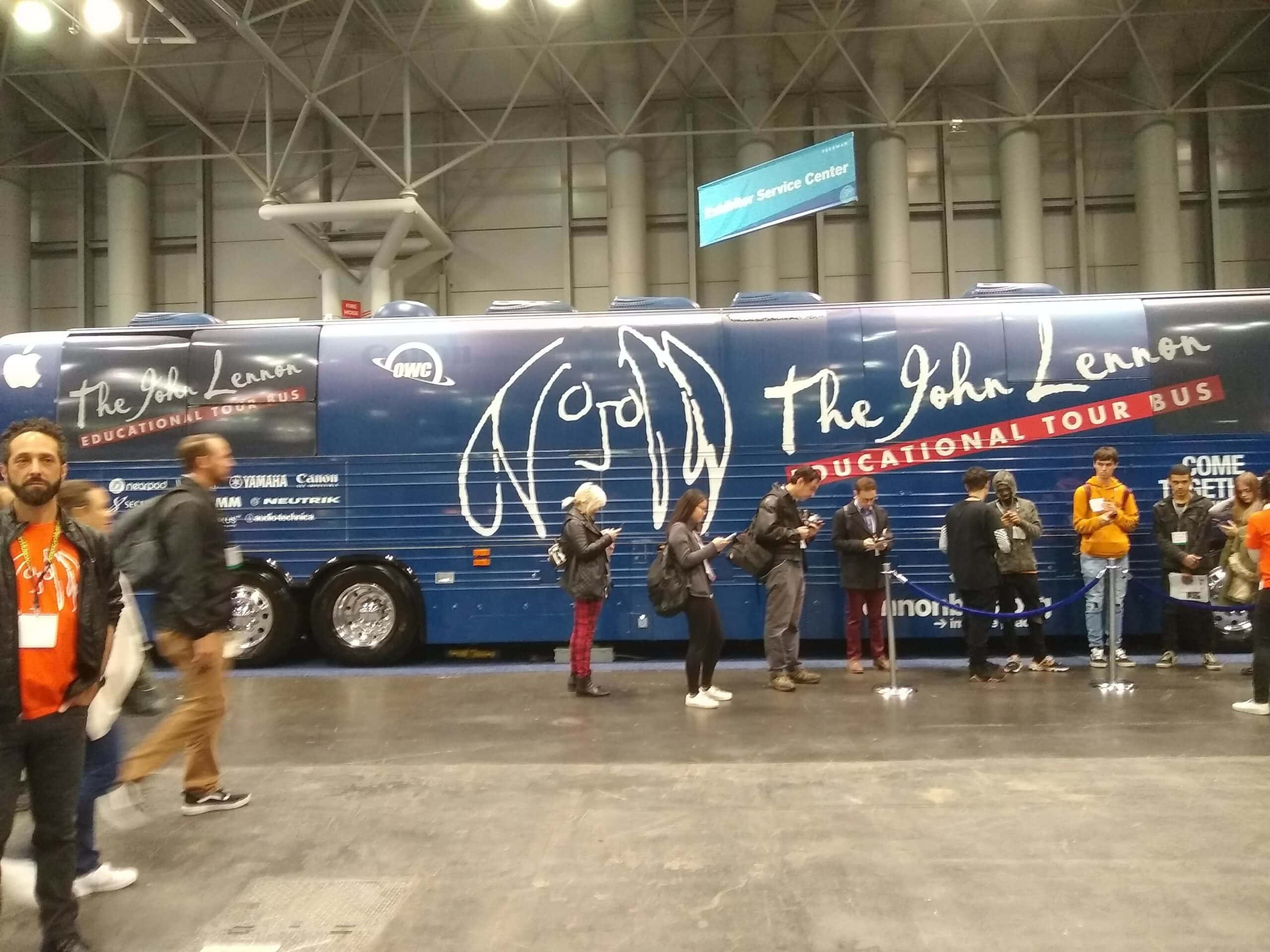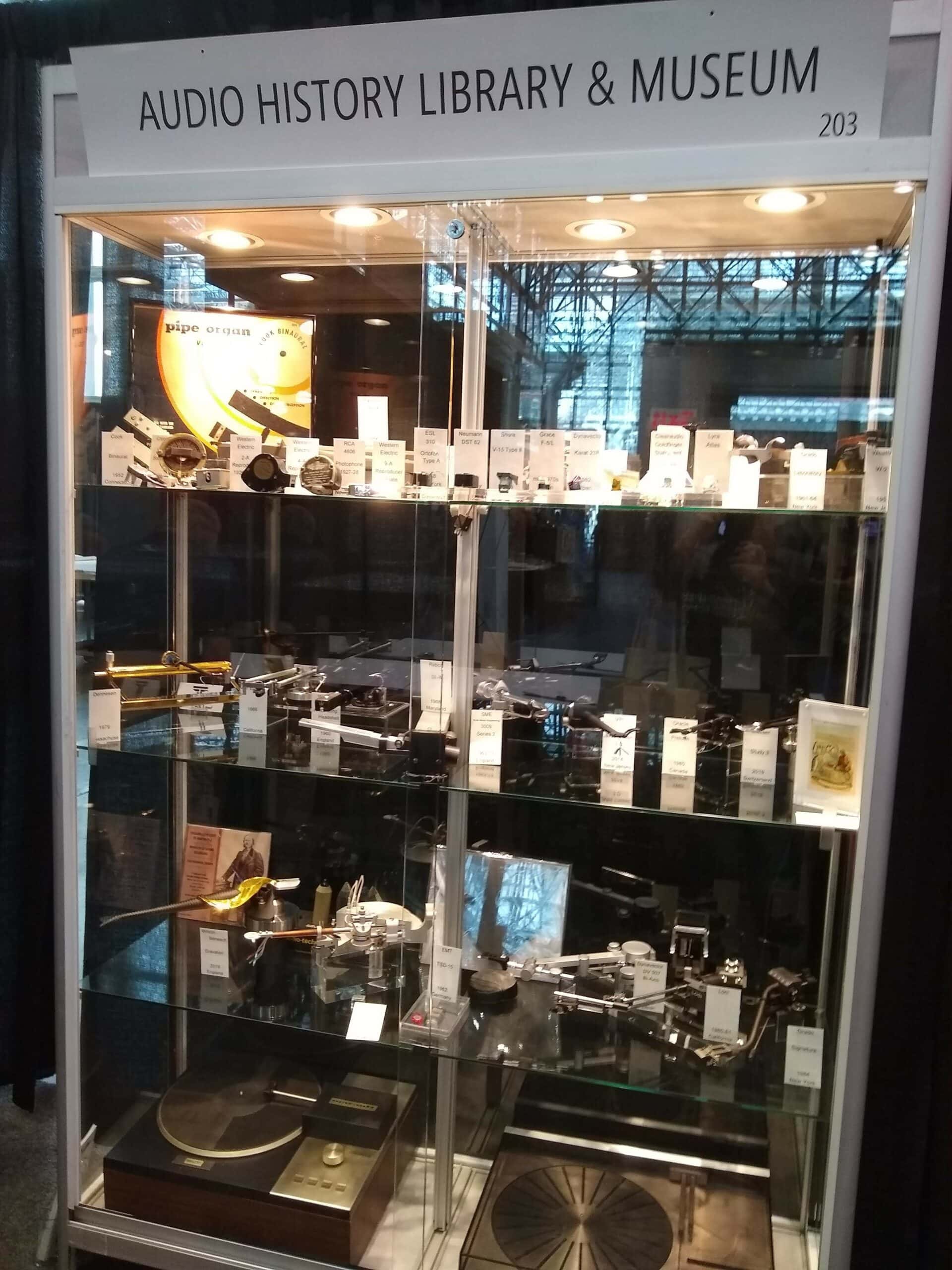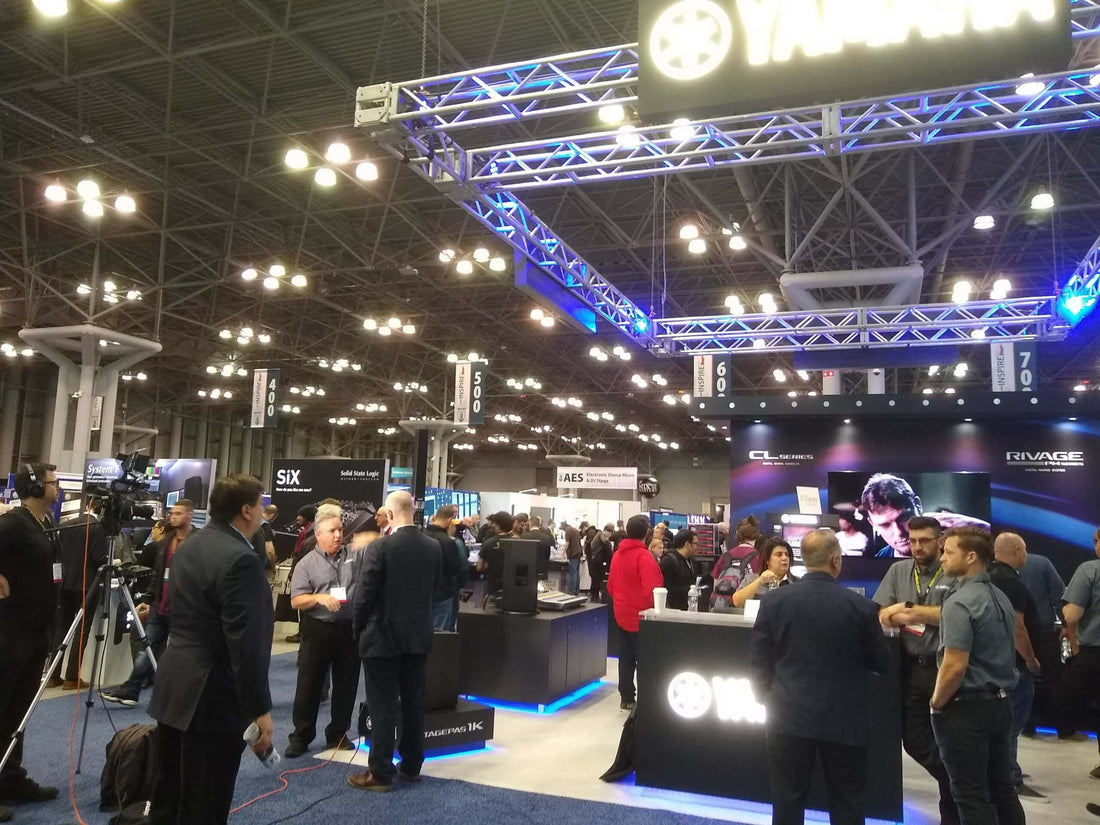For over 70 years, the Audio Engineering Society has been at the forefront making the latest technical information for sound recording, reinforcement, processing, and enhancement available to audio engineers and producers around the world. AES convention events have been showcases for the latest equipment and a forum for industry luminaries to share their experience and discuss where the industry was heading in the future. AES New York 2019 has kept to this format and taken it in a new direction, with its recognition and inclusion of Hip-Hop and EDM, the realities and labyrinths concerning finance for audio entrepreneurs, the ever increasing technical merge between audio and video, and some of the latest innovations to hit the market.
Kicking things off with a keynote address from Hip Hop pioneer Grandmaster Flash, AES New York surprisingly appeared to have even more attendees than last year, in spite of sporting fewer exhibitors and symposium events. Grandmaster Flash ironically demonstrated how imagination and innovation ultimately trump gear limitations by looping and creating breaks using bare bones old school equipment: a pair of turntables, vinyl records, and a crayon.
Symposiums covered a variety of topics, ranging from the loudness wars, sampling for hip hop, new technology standards, and other changes in the audio industry. The overall theme, whether intentional or not, seemed to be a look towards the future.
While it is impossible for one person to attend all of the symposiums and demos, here are a few of the significant highlights from the 147th AES, Day 2:
Mix With the Masters
Hailing from Paris, France, Mix With the Masters has been producing impressive educational videos on audio engineering and production, featuring such industry legends as Al Schmitt, Sylvia Massy, Tchad Blake, Eddie Kramer, Bernie Grudman, Hans Zimmer, Timbaland, and many others. Additionally, they host live workshops and a special annual one week seminar at Studio La Fabrique in France.
Multiple Grammy Award winning engineer Michael Brauer (Coldplay’s, Viva La Vida and Parachutes; John Mayer’s, Continuum and Battle Studies), gave an uplifting and enlightening presentation on some of the creative tools that the mixing engineer has at his or her disposal to contribute to the music – some with potentially radical results.

Michael Brauer
Brauer stressed the need for getting emotionally involved with the music in order to find the elements that best communicated to an audience. Far too often, the foundational elements can be obscured by “ear candy” or overemphasis on a drum sound or reverb at the expense of a groove or melody. The proliferation of plug ins and infinitesimal sound processing choices often tempt engineers into becoming distracted by support elements, which he likened to building a mix on quicksand. Whether the foundation was a guitar hook, a vocal line, or a drum groove, Brauer was emphatic about locating it and cited a number of helpful techniques to accomplish that task.
Some of these tips included:
- Starting the mix at the loudest or most complex part of the song, rather than at the beginning. In this way, the maximum loudness levels can be established and the song’s most climactic, emotionally impactful moments could set the tone for the rest of the song;
- Deleting or focusing on specific percussion instruments that could change the groove and dynamics of a song in different sections;
- Manual use of the console as another tool for the engineer to inject emotional participation into the music, such as using faders for exaggerated tremolo, mute switches, and other real time improvisations.
Brauer’s overriding message was that if we were approaching the music like musicians, we would just flow with it and not think of the scales or technical details and be in the moment of the performance. Translation: Engineering should not be about watching a screen and calculations, but be fun and no different in its approach to music.
Tom Lord-Alge (Rolling Stones, U2, P!nk, Oasis) gave an informative and humorous presentation as he attempted to contain his expletives while describing the initial hurdles he faced when mixing Blink 182’s “Adam’s Song” some 20 years ago and how he approached the remix today. His Pro Tools shortcut tips for drum replacement triggers and the use of guitar processors for drum sounds demonstrated his wide open, “whatever sounds good” mixing methodology.

Tom Lord-Alge
Funding Your Dream
One of the most welcomed symposiums was headed by attorney Heather Rafter of the boutique law firm RafterMarsh, a transatlantic legal specialist in the digital and audio technology industry. Other panelists included Phil Dudderidge of Focusrite, Ethan Jacks of Mediabridge Capital, Mark Ethier of iZotope, and mastering engineer Piper Payne.

From Left to Right: Phil Dudderidge, Piper Payne, Mark Ethier, and Ethan Jacks.
Rafter, who was lead counsel for Digidesign and Avid for over a decade, presented a well crafted overview of the financing landscape for entrepreneurs in the audio equipment and digital products industries. Providing examples for the pros and cons of venture capital, crowdfunding, debt finance, Mergers and Acquisitions, and other strategies, the Funding Your Dream symposium provided some much needed information for exhibitors and engineers alike. The panel additionally covered many of the unforeseen financial risks that both investors and entrepreneurs face without a solid business plan, and also how the Chinese tariff controversy can affect hardware manufacturing dependent businesses.
Given the breakthrough software and hardware design innovations being introduced annually in the industry, the advice from the panelists on IP protection was especially timely.
John Lennon Educational Tour Bus
With live renditions of Beatles tunes being performed by Instagram sensation Blac Rabbit, the John Lennon Educational Tour Bus exhibit was at the opposite end of the financial spectrum: totally not-for-profit professional mobile audio and video facilities, all installed into two (2) buses – one in the US and one in Europe – entirely for the benefit of inner city school kids, colleges, and Boys’ and Girls’ community clubs to learn how to create music and videos.


Launched in 2008 and supported 100% by Yoko Ono, the John Lennon Educational Tour Bus earned her a NAMM Music for Life award. Sporting top notch gear donated from Yamaha, Audio-Technica, Avid, Focusrite, Mackie, and numerous others, the Bus is a marvel of engineering design. The front portion houses the main control room, with video monitors, patch bays, and all of the processing gear to accompany the mixing console. The middle section, which is isolated by front and rear sliding doors, is a soundproofed compartment with keyboards, digital drums, and a vocal booth. The rear compartment, in addition to providing sleeping accommodations for the full time 2 person crew, provides an additional soundproof section and a uniquely designed drapery that allows for green screen video to deploy digital background effects. The mobile studio has also been hired by professional artists, such as Black Eyed Peas, Justin Timberlake, Wyclef Jean, John Legend, and Bob Weir, to name a few.




The John Lennon Educational Bus tour included a music video of an original song written, performed, recorded, mixed, shot, and edited by a group of high schoolers. A very impressive piece of work, it showed that the dream was alive and the next generation of original music held promise for the future.
Meyer Sound
Hadestown, Moulin Rouge, Les Miserables, The Lion King…these are just a few of the many Broadway and international theatrical productions that have chosen Meyer Sound for their audio systems, along with countless live concert artists, such as Metallica, Marc Anthony, Journey, and many others.
Starting in 1979, John Meyer’s UM-1 monitor first turned heads as a part of the Grateful Dead’s Wall of Sound. Over successive decades and multiple patents, Meyer Sound has become synonymous with premier theater and concert sound systems around the world.
The AES Meyer Sound demo, hosted by Daniel Rivera, showcased Meyer’s new digitally powered loudspeakers and subwoofers, which all sported decreased weight, increased frequency and phase response, more SPL, and significantly reduced prices.

Starting with Holly Cole’s single vocal and acoustic bass arrangement for “I Can See Clearly Now” and increasing on the loudness and instrumentation spectrum to Livingston Taylor’s “Isn’t She Lovely”, Black Eyed Peas’ “Boom Boom Pow”, AC/DC’s “House of Jazz”, and Sofi Tukker’s “Batshit”, Meyer’s new UPQ-D1, Ultra X-40 and 750 LFC, reproduced the music with larger than life fidelity, crystalline clarity and gut punch low end impact for bass and kick drums. The 11 rigging point options and added bang for the buck features for a roughly 23% lower price, as in the case of the Ultra X-40 vs. its predecessor, the UPA-1P, make Meyer’s new entries sure bet winners for future sound reinforcement installations and touring equipment.
Steve Jordan
One of the most eagerly anticipated speakers was Steve Jordan, producer/multi instrumentalist percussionist extraordinaire. He regaled the audience with stories of some of the many famous records he’s worked on by Keith Richards, Stevie Wonder, and others, and spoke about how the sound of certain records made at specific recording studios is what first captured his imagination.

Steve Jordan
For example, Ringo’s cymbal sound from Abbey Road first caught Jordan’s attention as a child. When he finally had the opportunity to cut tracks there, his drums were recorded and miked as per the current standard, and he said he was disappointed. He finally decided to listen to the drums with all of the close mics turned off and found that long lost magic sound by leaving the room mics alone.
When asked about his experiences with Chuck Berry for the Hail, Hail Rock and Roll! documentary, Jordan, a longtime fan of Berry’s drummer Fred Below, explained that Keith Richards had originally decided on Rolling Stones’ drummer Charlie Watts. Serendipitously, Berry saw a video recording of Jordan drumming in the Fred Below “swing against straight 8ths style” at the post celebration jam after the first Rock n Roll Hall of Fame induction ceremonies. He then declared he wanted THAT drummer, whoever he was, since Jordan was not visible on camera.
Humorously, Jordan arrived in Jamaica for rehearsals and Berry mistook him, with his then fashionable dreadlocks, for a reggae drummer, and fired him on sight. Richards subsequently convinced Berry that Jordan was an American and indeed the drummer on the video, and the rest was history.
He also recalled a conversation with Geoff Emerick, who was puzzled as to why classical musicians embraced digital sound so readily, in spite of its lack of analog warmth. Jordan, a classically trained symphonic percussionist, explained it was a craving for the silence and the lack of analog hiss during silent portions within the music. Emerick’s reply was a nonchalant, “Hmm, never thought of that.” Jordan laughed at the irony of his explaining something about sound to one of the best audio engineers in the world.
Jordan’s final words resonated with the overall unstated theme of the AES convention: support recording studios, keep playing and learning, make timeless sounding records no matter what gear you use, and the music will change lives. The music of the future should be just as timeless and meaningful as the great records of the past.
AES NYC 2019 offered many other discussions and exhibitions but this was just a small sampling of the incredible diversity of coverage and detail the organizers have considered worthwhile.




